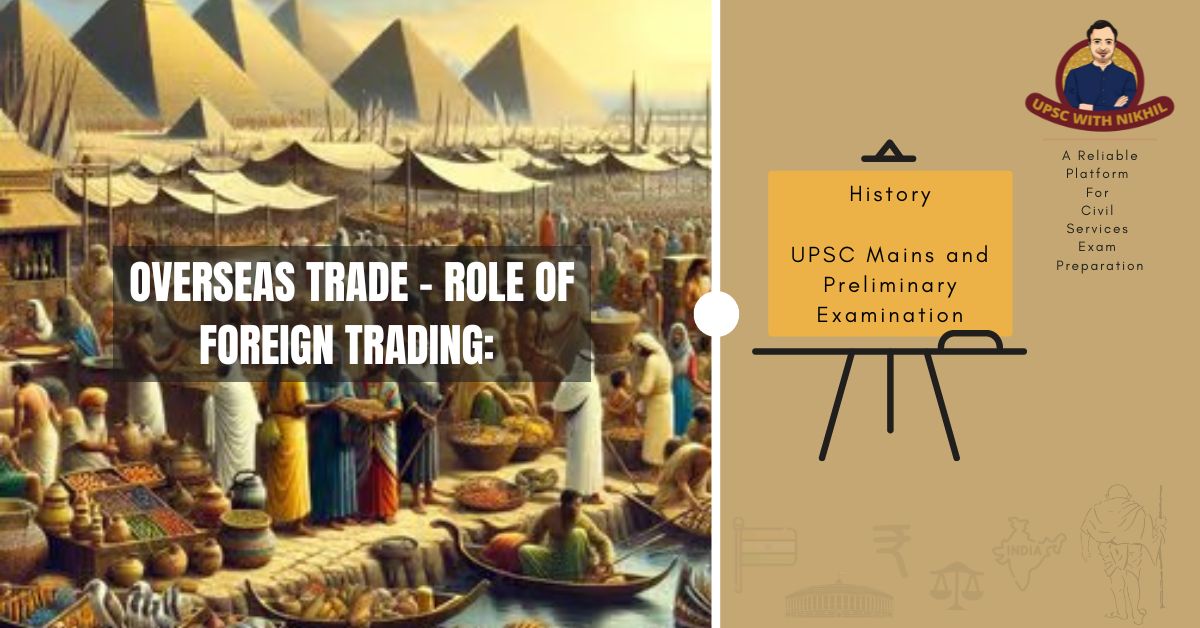Overseas Trade - Role Of Foreign Trading: Medieval India
Introduction
India had long-standing commercial ties with foreign nations. The pattern of trade and commerce evolved during the course of the time. During the 16th and 17th centuries, trade between India and a vast variety of foreign nations was prospering. The arrival of the Europeans is a key factor in this era's international trade. India's exports expanded dramatically as a result. Exports of goods from India made up the majority of this commerce. There were hardly many imports.
Overseas Trade - Features
• India has historically kept up its trading ties with foreign nations.
• India's trade balance was in its favor. India's wide trade and high-quality exports resulted in wealth inflows and exports of items to other nations.
• In the early middle Ages, starting in the tenth century, India traded with contemporary China, Arabia, and Egypt.
• India had a substantial stake in the marine trade between the South China Sea and the Persian Gulf.
• In addition to importing horses from countries like Bahrain, Muscat, Aden, and Persia, India also imported silk, porcelain goods, camphor, cloves, wax, sandalwood, and other products from China and South Asia.
• Among the goods exported from India were aromatics and spices, cotton fabric, ivory, valuable and semi-precious stones, and other things.
International Trade: During The Sultanate Period
• India had business ties with Central Asia, Afghanistan, the Persian Gulf, and the Red Sea.
• India mainly imported valuable metals like gold and silver, horses, brocade and silk fabrics, and other items while exporting food grains, textiles, slaves, indigo, precious stones, and other goods.
International Trade - During The Mughal Period
• The entrance of European trading companies and their direct involvement in Euro-Asian and intra-Asian commerce during the Mughal era greatly increased India's foreign trade.
• While it presently contributes less than 1%, it is estimated that at the end of the 17th century, India had over 25% of the global market share for textile exports.
• Along with other nations, India continued to do trade with France, Holland, Portugal, England, Arabia, Egypt, Central Asia, Persia, China, Japan, and Nepal.
• The most significant export was cotton fabric. Muslin from Dhaka, silk from Banaras, and cotton textiles from Surat, Ahmedabad, and Madurai were also exported by European traders. Malabar pepper was in high demand among international traders. Spices, opium, sugar, saltpeter, and other goods were also exported.
• In contrast to exports, imports were restricted to a few specific goods including horses, velvet, home goods, weapons and ammunition, perfumes, and wine. India received both fresh and dried fruit imports. Horses from Arabia and carpets from Persia were brought in.
• Along the sea shores of Bengal, Gujarat, and the Deccan, there were numerous ports. There were also land routes.
• The pattern of Indian trade had changed by the 17th century. Up to the end of the 16th century A.D., the Portuguese were in charge of managing India's trade with Europe.
• The East India Company was established in the seventeenth century by English traders. British settlements sprang up at Madras, Bombay, Calcutta, Hooghly, and many other places before the end of the 17th century AD.
• The French were pushed back to Pondicherry and Chander Nagar while the Portuguese were pushed back to Goa.
Conclusion
India maintained strong economic ties with several regions of the world in the early mediaeval era. India thus developed into a hub for global trade. Before the Portuguese took over, Muslims dominated India's trade, which was later abandoned. Gujarat, Goa, Calicut, Cochin, Quilon, and other significant ports were instrumental in India welcoming foreigners. In addition to the tremendous equality and justice displayed to all by the monarch and his subjects, the total freedom of travel and ownership allowed by the kings without regard to whether he was a Christian, Jew, Moor, or Heathen, drew a lot of traders.


